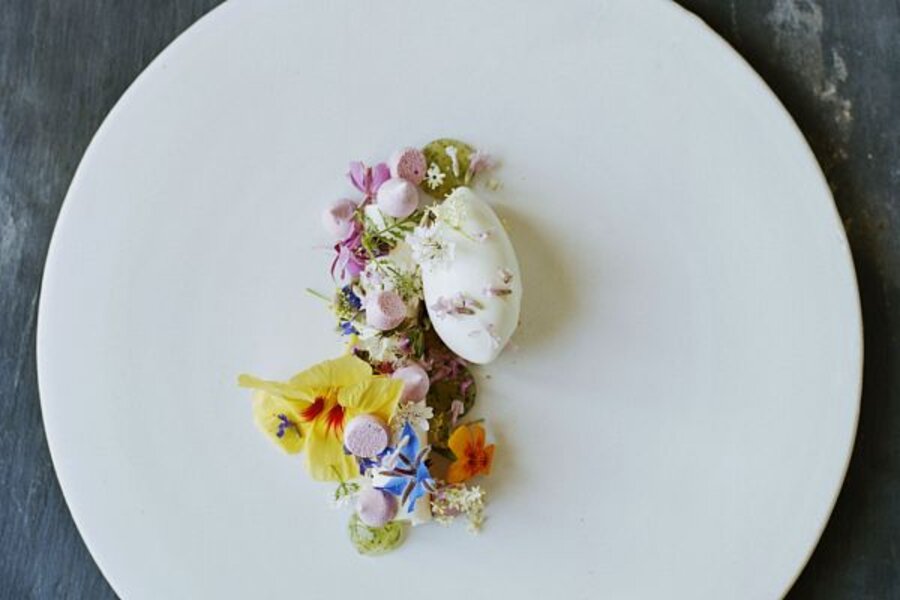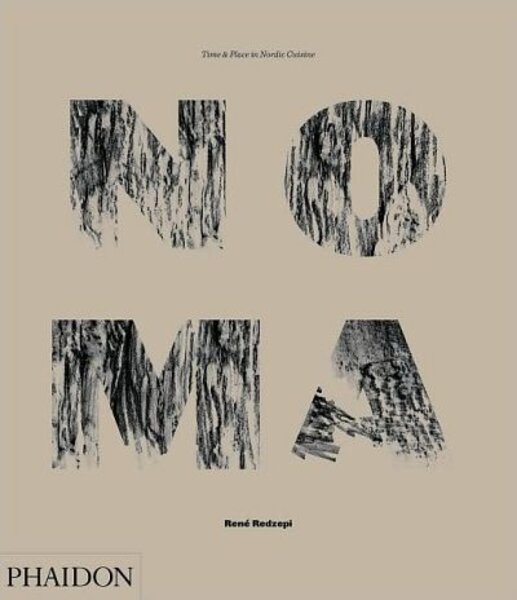A Nordic feast of spring in 'Noma'
Loading...
The last of the snow from the winter is finally melting in the woods near my house, north of Boston. Spring is in the air, and when I walk my dog on a nearby country road that runs between two lakes, I can see all manner of fresh life peeking up from the ground.
If I knew what to look for, I would certainly see the tender beginnings of numerous edible species of plants. After reading "Noma" by René Redzepi I am convinced I am missing a harvest feast of fresh, local flavors at my feet.
Redzepi is a legend in the international food world, currently serving as head chef of Noma, a Copenhagen restaurant he co-founded in 2003 at the age of 25. Noma, with its austere decor and stylized dishes, strives to revive and reinvent Nordic cuisine with "a certain purity, an essential simplicity" with the region's distinctive flavors. The restaurant is so in demand that it takes reservations four months in advance only and has earned such accolades as being named one of S. Pellegrino's “The World's 50 Best Restaurants" in 2010, among others.
This time of year finds Redzepi and his kitchen staff out in the parks and woods in and around Copenhagen, foraging for wild mushrooms, berries, shoots, and other delicacies of the season. At Noma they are rendered into fantastically named dishes such as “Bouillon of Steamed Birchwood, Chanterelles and Fresh Hazelnut” or “Musk Ox, Fresh Young Garlic, Milk Skin and Carmelized Garlic.”
The restaurant – and now its cookbook – has inspired something of a movement among other Nordic chefs to connect to the living heart of the region’s land- and sea-scapes through an intimate attention to the seasons.
"Noma," the cookbook, features nearly 100 recipes, many of which are likely to be well beyond the abilities of the average home cook to prepare, much less to even find the rare ingredients. There is even a note in the back of the book alerting readers to the challenges posited by Noma's technique, equipment, and experience. But in a way, that is almost beside the point.
This cookbook is a feast for the eyes, an adventure book even, that transports readers to another time and place. Inside its front cover is a foldout, hand-drawn map of the Nordic region. It traces Redzepi’s 2003 voyage to the Faroe Islands, Iceland, and Greenland in search of ingredient suppliers and Scandinavian furnishings for his restaurant, such as simple wooden chairs with seats of leather, draped with sheepskins.
At its core, "Noma" is a celebration of the relationships between a difficult, beautiful land and the people who have survived and thrived there. In extracts from a diary kept during his 2003 trip, as well as in individual paeans to some of his most important suppliers, Redzepi meditates at length on the critical importance of time and space; “time” being the nuances of seasonal changes in the availability of ingredients, and “space” being the specific microclimates, soil conditions, and other factors that contribute to things being exactly and spectacularly what they are. The other factor he emphasizes is commitment to excellence – a key “ingredient” he identifies in all of his suppliers, who are dedicated farmers, foragers, and fishermen.
Ultimately, this beautiful book will call a reader to become aware of one's own environment, to learn as much as possible about the landscape and native plants, as well as the history and culture of the food that springs up beneath our soles.
– Ed Blomquist is a Monitor contributor.
(see page 2 for Noma's "Dessert of Flowers" recipe)
Dessert of Flowers
Adapted from Noma: Time and Place in Nordic Cuisine (October 4, 2010 $49.95) Phaidon Press, www.phaidon.com
Serves 4
Note: This recipe requires advanced techniques, accurate measurements using the metric system, specialist equipment and professional experience to achieve good results.
Ingredients
Elderflower Mousse
130g double (heavy) or whipping cream
80g egg whites
4g gelatin
75g elderflower cordial (syrup)
16g sugar
200g skyr*
Rose Hip Meringue
75g pickled rose hips
50g sugar
45g water
3g egg white powder
3g gelatin
1g salt
Violet Syrup
22g sugar
75g water
1 drop violet essence
Thyme Fluid Gel
19g sugar
125g water
2g thyme
0.25g agar-agar**
5g instant food thickener
Skyr Sorbet
1 sheet gelatin
300g water
170g sugar
42g glucose
290g skyr
25g lemon juice
For Serving
Any fresh flowers in season.
*Skyr is a mildly sour-tasting milk product, similar to strained yogurt, although technically a very soft cheese. It is popular in Iceland and Denmark.
**Agar-Agar is a gelling agent derived from seaweed, which retains its gelling properties up to a temperature of 80 degrees C. (176 degrees F.).
Instructions
Elderflower Mousse
Whip the cream and the egg whites in separate bowls. Bloom the gelatin and dissolve it in a small amount of the cordial by heating it up with the sugar. Mix the cordial and the gelatin into the skyr, and fold the cream and the egg whites into it. Cut a sheet of acetate into pieces approximately 8x4 cm and roll into tubes. Pipe the mousse into the tubes and freeze.
Rose Hip Meringue
Blend the rose hips to make a concentrate. Heat the sugar and water in a pan to 121 degrees C. (250 degrees F.). Lightly whisk the egg whites and add the caramel slowly to make an Italian meringue. Bloom the gelatin and add before the meringue base gets cold. Add the concentrate and the salt and pipe the meringues in small dots. Dry at 55 degrees Cs (130 degrees F.) for 12 hours in a dehydrator.
Violet Syrup
Bring the sugar and water to a boil, then cool. Add the essence and keep in a squeezy bottle.
Thyme Fluid Gel
Bring the sugar and water to a boil in a pan to make a syrup, then cool. Blanch the thyme and refresh it in cold water. Blend the syrup with the thyme for 1 minute at full speed and strain. Whisk the agar-agar into the liquid and bring it to a boil. When cold, blend it with a stick blender and add the instant food thickener.
Skyr Sorbet
Bloom the gelatin. Warm the water, sugar and glucose and add the gelatin. Mix the rest of the ingredients and pour into Paco containers*.
Garnish
Pick all the flowers off their stems and put into ice water. Dry them and keep on dry paper.
To Serve
Put the plates in the freezer to get very cold. Remove the frozen mousse from the acetate tubes and let it temper to around 5˚C (41˚F) on a cold plate. Dot a little of the fluid gel and the syrup around the plates and cover it with meringues. Process the sorbet, make into quenelles and place a quenelle next to the mousse on each plate.
*Paco Containers are the receptacles used with a Pacojet, a machine used to make sorbets with a very fine texture.






